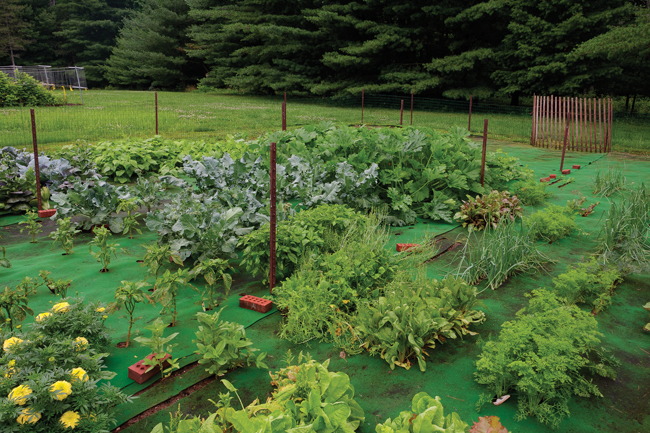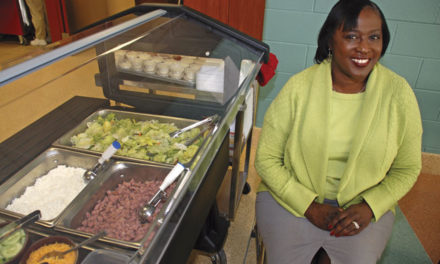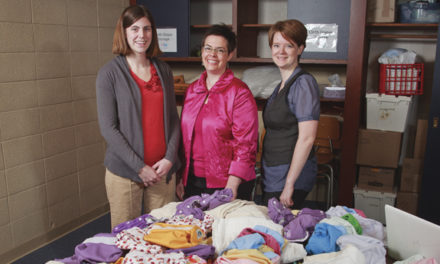BY MOYA ANDREWS
Bloomington resident Phyllis Schwitzer was already an accomplished home gardener when she encountered the book that gave her a new perspective on growing vegetables and flowers. It was called The Carpet Garden, and “it changed my methods significantly,” Schwitzer says.
She still tills the soil and adds manure every spring, but that’s the end of traditional gardening until harvest time. When she’s finished with soil preparation, she then rolls out a carpet that covers the entire 34-by-50-foot plot.
When carpet is laid for the first time, she uses an electric drill, saw, and carpet cutter to make holes for her plants. “Round holes for broccoli, squash, and pumpkins and rectangular spaces for lettuce, radishes, carrots, beets, and annual flowers such as zinnias.” A wire fence surrounds the garden, “and on the stakes I grow tomatoes and pole beans,” Schwitzer says. “It takes about two hours to lay it all out each spring.”
The carpet has several advantages, she says. “There are no weeds as each plant has shaded the soil in which it grew, and this prevents weeds from growing.” The carpet keeps dirt off the produce and is so moisture retentive that she only waters when plants are transplanted. She notes it is important to use indoor/outdoor carpet — hers is green — without a foam backing so that water penetrates through to the soil.
Then, except for harvesting the crops, “there is nothing much to do the rest of the time,” Schwitzer says. “All of the labor occurs at the beginning and end of each growing season.”
Come fall, she pulls out the fence posts and rolls the carpet upside down — it only needs to be replaced every seven years — and stores it in her barn for the following year. “A fork lift and a willing assistant are invaluable,” she says.
Carpet gardening produces a reliable bumper crop for Schwitzer. She has so much produce each summer that she gives much of it away.
To learn more, check out The Carpet Garden by Renee and Steve Rockmore (Thomas Y. Crowell Co., New York, 1978).
















